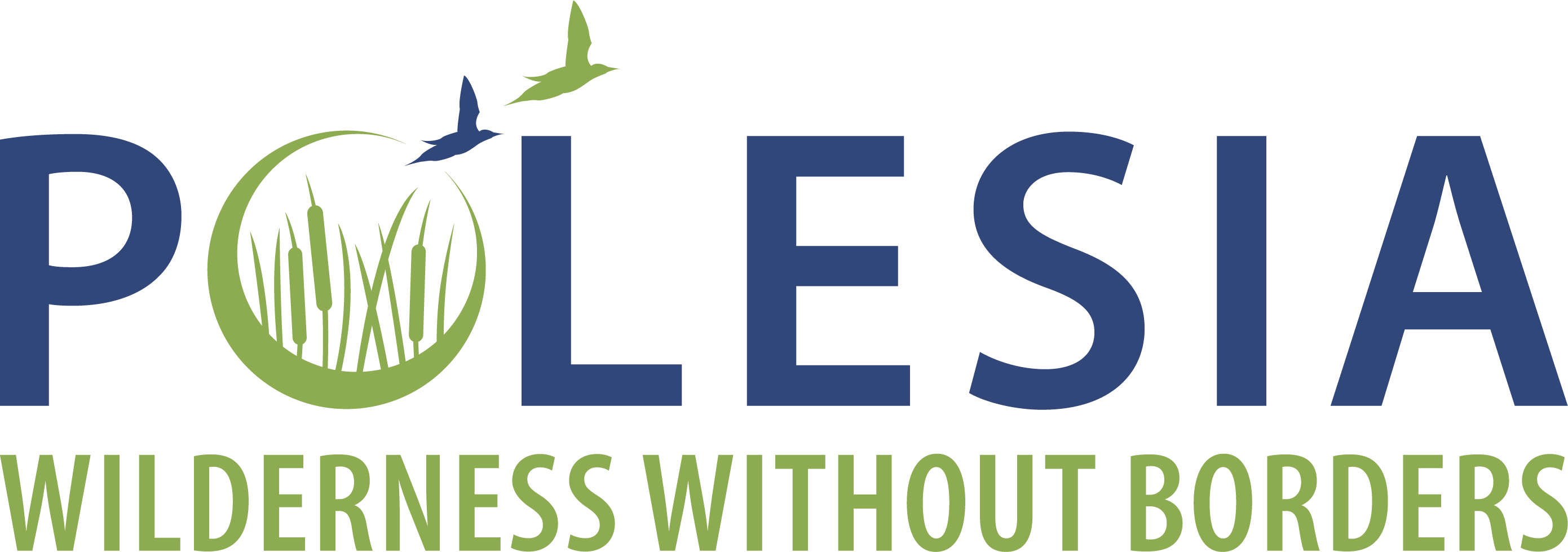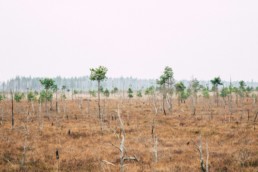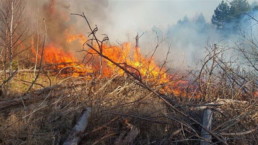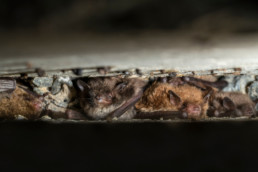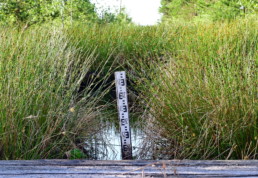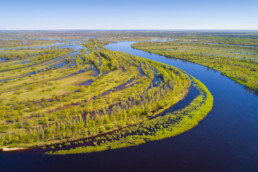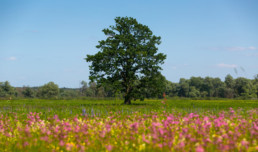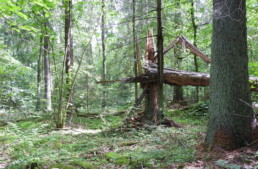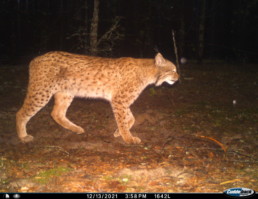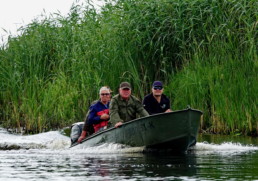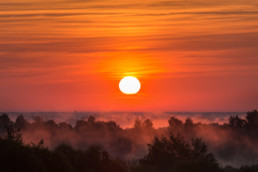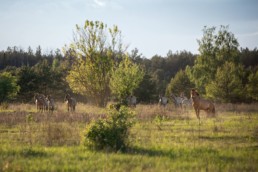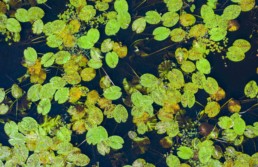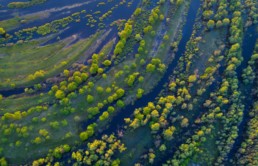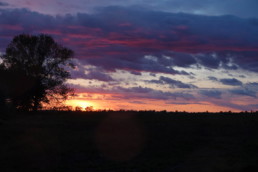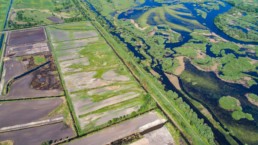Almany Mires Reserve Expanded
Almany Mires Reserve Expanded
Polesia’s vast Almany Mires Reserve expanded by 10,000 ha, securing habitat for threatened species.
A 10,000 hectare expansion of the Almany Mires Nature Reserve in the Belarusian part of Polesia was announced by the Republic’s Council of Ministries on March 3rd 2021. The reserve now spans over 104,000 hectares (about the size of Hong Kong) – securing Europe’s largest intact transition mire and crucial habitat for globally threatened wildlife. Together with protected areas across the border in Ukraine, it forms one of the largest natural complexes of bogs and transitional mires on the continent. The area stores huge amounts of carbon and forms part of the Pripyat river basin, playing a vital hydro-regulatory role for one of Europe’s last wild rivers.
Surveys strengthen case for expansion
The decision to expand Almany hinged on efforts by local NGOs, the Ministry of Natural Resources and Environmental Protection, and the Belarusian Academy of Sciences (NAS), supported by FZS. FZS partner APB-Birdlife Belarus has been working closely with the NAS and also the British Trust for Ornithology to carry out biodiversity monitoring and surveys in and around Almany since 2019. High conservation value forests were mapped and various field camps were completed to identify roosting trees for bats, nests of threatened birds, and other key sites for biodiversity. Acoustic recorders were deployed collecting thousands of hours of recordings and allowing researchers to identify the wildlife detected, in particular bats. Camera traps were also deployed to survey large mammals. This work, carried out as part of the ‘Polesia – Wilderness Without Borders’ project with funding from the Endangered Landscapes Programme and Arcadia – a charitable fund of Lisbet Rausing and Peter Baldwin, helped identify crucial habitat beyond the boundaries of the reserve. The preparatory work for these efforts was supported by the Claus und Taslimawati Schmidt-Luprian Stiftung Vogelschutz in Feuchtgebieten. The Belarusian Academy of Sciences submitted an expansion proposal, based on these results, to the Ministry of Natural Resources and Environmental Protection earlier this year. The proposal was accepted in March.
Watch field biologist Stas Werdal from Belarus climb high into the canopy to deploy camera traps for the study of rare Greater Spotted Eagles (Clanga clanga):
Crucial habitat for rare wildlife
Almany harbours a rich diversity of species. Large predators like Eurasian lynx and wolf roam in search of prey, which also thrive in the area; while rare birds breed in the canopy of its riparian pine-dominated forests. Listed as a BirdLife Important Bird and Biodiversity Area, the summer months see one of Europe’s rarest songbirds, the globally threatened Aquatic Warbler, and the country’s largest Greater Spotted Eagle population move into the area to breed. During this time, thousands of other migratory birds also stopover in the area to rest and build up reserves for their winter flights. Other notable species found in the area include Black Stork, Terek Sandpipers, Golden Plover, Common Crane and Great Grey Owl.
Next steps for this important heritage
Although our partners in Belarus are celebrating this fantastic result, they are determined to achieve an even higher level of protection for this special landscape. The ‘Polesia – Wilderness Without Borders’ project is preparing a bid to designate a transboundary, 250,000 hectare UNESCO world heritage site in Polesia, with Almany at its heart. Conservationists also fear that the level of protection offered by the legislation of a ‘nature reserve’ might not provide adequate protection for this unique area. They plan to apply for the highest level of protected area status in the country – Strict Nature Reserve – which would better protect Almany’s forests from exploitation.
Article written by Zanne Labuschagne, communications coordinator at FZS.
The project “Polesia – Wilderness Without Borders” is part of the Endangered Landscapes & Seascapes Programme and is funded by Arcadia. The project is coordinated by Frankfurt Zoological Society (FZS).
Polesia: a vast wetland wilderness
Polesia: a vast wetland wilderness
The world’s wetlands are disappearing three times faster than its forests, with 90% lost since the 1700s. These vanishing ecosystems play a crucial role in storing and cleaning water, mitigating flood damage, sustaining biodiversity, providing us with food and storing huge amounts of carbon.
Protecting wetlands
Polesia is Europe’s largest wetland wilderness and greatest floodplain region. Some of the continent’s last ‘wild’ rivers meander across the landscape, through a vast patchwork of carbon storing peatlands and forests, islands, lakes, bogs and wet meadows. Stretching across Belarus and Ukraine, spreading into Russia in the East and Poland in the West, Polesia covers more than 18 million hectares – about half the size of Germany. This is crucial habitat for struggling wildlife. The area harbours 60% of the world’s remaining aquatic warbler population and is the most important breeding ground west of Russia for the globally threatened Greater Spotted Eagle. Hundreds of thousands of migratory birds stopover in Polesia each year to rest, feed and breed while large mammals, like wolf, lynx and European bison, occur in significant numbers.
The ‘Polesia – Wilderness Without Borders’ project, through funding from the Endangered Landscapes Programme and Arcadia – a charitable fund of Lisbet Rausing and Peter Baldwin, is working to secure this rich natural heritage. By gaining a better understanding of the abundance and connectivity of the area’s wildlife our team are mapping priority sites. We are working with partners in Ukraine and Belarus to identify and establish new protected areas, and expand existing ones with the aim to create a contiguous network covering over 1 million hectares of ecologically functioning landscapes, including wetlands. Recognising Polesia’s global importance, the project is working on a UNESCO World Heritage Site and Biosphere Reserve nomination and driving the establishment of a cross-border Ramsar Site in Polesia. The Wild Polesia project also provides equipment and technical support to local authorities to improve the management of protected areas.
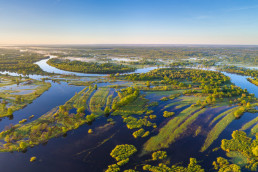
Restoring landscapes
The protection of surviving, intact wetlands is crucial, but unfortunately we have reached a point where we now need to go a step further. Altered and degraded wetlands and their vital ecosystem services need to be restored and brought back to life. Although much of Polesia’s wetlands remain largely intact and undamaged some areas have been altered. Over the coming years the Wild Polesia Project plans to restore over 6,000 hectares of mires and floodplains that were drained at the beginning of the last century.
Work has begun at the project’s first restoration site: Nerasnia in Belarus. Neresnia is a degraded transitional mire, part of the Wetland Topilovskoye, covering about 2000 hectares. This mire has been significantly altered by drainage channels and fires. These drainage channels will be blocked, in order to re-wet the mire. Monitoring hydrology, vegetation and invertebrates will help us assess and adapt our restoration efforts.
Watch FZS Belarus Programme Leader Viktar Fenchuk explain our approach:
Article written by Zanne Labuschagne, communications coordinator at FZS.
The project “Polesia – Wilderness Without Borders” is part of the Endangered Landscapes Programme and is funded by Arcadia. The project is coordinated by Frankfurt Zoological Society (FZS).
Guardians of Polesia
Guardians of Polesia
by Zanne Labuschagne
In Belarus and Ukraine local communities from Polesia are coming together to volunteer for the protection of the incredible wilderness they call home.
Local ‘volunteer caretakers’ are donating their time to protect Polesia’s reserves and key wildlife areas. The ‘Polesia – Wilderness without borders’ project, with support from the Endangered Landscapes Programme, now works with 12 volunteer caretaker teams from Ukraine and 47 volunteer caretakers from three groups in Belarus. The initiative is relatively new and as such the project continues to learn the best approach in each country and adapts accordingly. APB-Birdlife in Belarus and the Ukrainian Society for the Protection of Birds (USPB) in Ukraine are helping to guide this strategy at a national level.
Meet Anastasia
Project partner APB-Birdlife Belarus now has 47 registered volunteer caretakers in Polesia. Organised into three groups, they primarily work in the Important Bird Areas (IBAs) of Almany Mires, Mid-Pripyat and Turov Meadows. In 2020, working hand-in-hand with the caretakers, the project team organised eight workshops and community meetings to promote nature conservation and take action.
Anastasia Blotskaya, who co-ordinates the activities of one of the three APB volunteer caretaker groups, held over 150 environmental education lessons in local schools in 2020. A physical education teacher by training, Anastasia developed an extra-curricular course for local schoolchildren called ‘ABC of Ornithology’, teaching them about birds, endangered species and the importance of nature. The course is now scheduled once a week with three groups from two primary schools in the area.
Turov has been home for Anastasia and her family for the past ten years – even in that short time she has seen many changes. Anastasia is particularly concerned about lower rainfall in recent years and the resulting drop in water levels in Polesia’s rivers and wetlands. Even her young son has noticed that snowfall has become less and less each winter. Touched by the magic of Polesia, she is now working to encourage its protection within her community;
“I would very much like people to understand that material things are not as important as what nature gives us – when you breathe clean air, hear the singing of birds, the murmur of water – that’s what is valuable”.
Over-harvesting of wild berries
During the warmer months the mires and forests of Polesia become carpeted with bilberry and cranberry bushes laden with fruit. The rich abundance of berries provides important food for wildlife, but also attracts large groups of berry pickers each season. Wild berries are an important source of income for local people who pick and sell them in the summer months, but when done at scale and in the wrong places this activity becomes problematic.
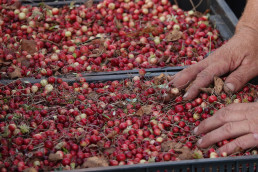
One area of concern is the Almany Mires Nature Reserve in Belarus – one of Europe’s largest natural mires covering 100,000 hectares. Many species breed in the area, including the globally threatened Greater Spotted Eagle. Almany is heavily impacted by over-harvesting of berries. Pickers build illegal roads to ease access to the area, allowing for more amenities to be brought to their temporary camps. After the harvest, the land is left trampled and scattered with large quantities of litter. The breeding eagles are particularly sensitive to human disturbance and the presence of berry pickers can result in adults moving elsewhere and abandoning their chicks.
The volunteer caretakers are playing a crucial role in tackling this threat to Polesia. This year, two expeditions were organised taking volunteers into the field where they identified illegal camps and cleaned up the litter left behind. Additionally, a training on using mapping tools, including a Geographic Information System (GIS), was held to allow the teams to build up a database of camp locations and the results of field work. With the help of regional coordinators, field experts, forestry employees and the caretakers, 60 illegal berry picker camps were identified and mapped in Almany Mires and Stary Zhaden Nature Reserves this year. A map containing the illegal camps is being constantly updated and transferred to the relevant state authorities.
Meadows are overgrown
The volunteers also clear overgrown meadows near Turov in Belarus. According to ornithologist Pavel Pinchuk, who has been monitoring birds from the Turov Ringing Station for over 20 years, wader numbers across Europe are showing worrying declines. One reason for this is the lack of breeding habitat for these species. Meadows along watercourses that the birds historically used as display sites or leks, and for nesting, have become overgrown and are turning to scrub and forest due to less frequent flooding. The overgrown vegetation and lower water levels also place crucial habitat at risk for wild fires. By clearing thick vegetation from the meadows and restoring the grassland that the waterfowl require to breed, the volunteers hope to reverse this trend in Polesia.
860 kms by bicycle in Ukraine
In Ukraine, a total of 12 volunteer caretaker groups have been established, working with local partner Ukrainian Society for the Protection of Birds (USPB). Eleven of these are made up of high school students and one is a group from Zhytomyr University. These environmental enthusiasts regularly come together to monitor and protect biodiversity in the unique wilderness they call home. Although the COVID-19 pandemic hindered activities, and fewer than hoped were possible, important progress was still made in Ukraine this year.
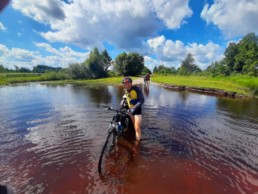
During an 860-kilometre field trip, carried out on bicycles, eleven of the volunteer caretaker groups in Ukraine were visited. The two-week bike tour across the project area took place in July and included Wild Polesia community engagement officer, Dr Serhiy Panchenko, and a support team. During the tour the team assessed the potential for tourist bike trails in the area. Nature reserves and wildlife areas being overseen by the volunteer caretakers were also visited and inspected, and the team developed a new volunteer work plan, taking the management of many activities online due to the pandemic.
For the past six months the volunteers have also been identifying and developing ‘eco-trails’ to share the area’s natural and cultural heritage with visiting tourists. One 29-kilometre trail has already been identified in the Rivne region, while the team aims to finalise several others in the Ukrainian part of Polesia by mid-July 2021. Volunteers and young people from the local community will then be trained to guide visitors along the trails.
Across the globe young people are mobilising to fight for the protection of the planet they will inherit, theirs are some of the loudest voices advocating for climate action. The volunteer caretakers in Polesia have shown that they care for the future of their home and are willing to invest their time and effort in ensuring this important wilderness is protected.
Zanne Labuschagne is a communications coordinator at FZS.
The project “Polesia – Wilderness Without Borders” is part of the Endangered Landscapes Programme and is funded by Arcadia. The project is coordinated by Frankfurt Zoological Society (FZS).
Maksim-wolf: a beloved colleague and friend
Maksim-wolf: a beloved colleague and friend
by Elleni Vendras
To our great sadness, our fieldwork assistant and dear friend Maksim Belotsky passed away on Friday, May 22. Maksim was only 35 years old.
In our team we used to call him Maksim-wolf because of his fascination for wolves.
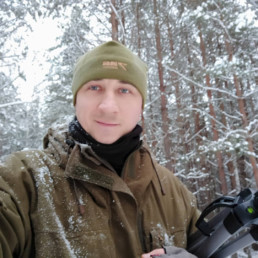
Maksim was an extremely motivated, passionate and engaged colleague. He started to work for APB-BirdLife Belarus back in 2018. The fact that at first, he was denied the job he had applied for did not demotivate him: He offered to become a volunteer for the organisation instead, or as he described it, “I try to help to the best of my humble powers”. Being himself native to Polesia, he followed the GPS-collared wolves through the mires and forests of this beautiful landscape in all weather conditions and at any time of day. He was truly in love with nature and most fascinated by wolves. In his free time, Maksim ran a blog (Instagram @info_wolf) about his numerous adventures following the wolves and not only that. He was a big fan of wildlife, outdoor activities and equipment, and what he called forest cuisine. By profession, Maksim was an IT-specialist.
In the project, Maksim was mainly responsible for wildlife monitoring with camera traps, acoustic soundrecorder monitoring, hydrological monitoring and of course for tracking wolves. The data from this wolf tracking was published on the website vouk.by. Maksim was very happy about every new task and challenge. He lived and worked “to the fullest” – there wasn’t anything that he would do half-heartedly. His big dream was that people would stop hunt wolves and other wildlife.
For a long time, Maksim was treated for pain in his shoulder, but finally, he was diagnosed with cancer. Our thoughts and deepest condolences are with his family and loved ones. We are eternally grateful that we have met Maksim with his contagious enthusiasm. He will always stay in our hearts.
… only a hike, only a route through the wild Polesian nature, taught me to appreciate and to celebrate the little things. And on the route this joy turns out to be sincere, occupying your whole world and all consciousness.
– Maksim Belotsky
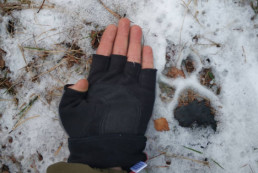
Elleni Vendras is a Project Coordinator at FZS.
Here you can read more about Maksim's wolf work and his exciting adventures in his personal blog on Instagram.
The project “Polesia – Wilderness Without Borders” is part of the Endangered Landscapes Programme and is funded by Arcadia. The project is coordinated by Frankfurt Zoological Society (FZS).
Fighting fires through wetland restoration
Fighting fires through wetland restoration
by Alina Lepeshkina, Corinna Van Cayzeele, Elleni Vendras, and Adam Gristwood
Following a devastating wildfire season in Polesia, action should upsurge to restore mires – an effective measure to stem even more frequent and destructive fires in the future.
This April, vast wildfires that raged across Polesia in Ukraine and Belarus made news worldwide. The restoration of important mire systems could help stem devastating increases in the frequency and intensity of the wildfires.
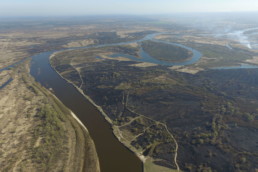
News that fires were tearing across the Chernobyl exclusion zone, situated in Polesia, captured international attention. The enormous fires were a harrowing reminder of the world’s largest nuclear disaster that happened decades earlier and lives on through radiation in the ground. But while the threat of radiation becoming airborne and spreading as a consequence of forest fires is thought to be minimal, the fires were an alarming demonstration of the threat that climate change is causing in the here and now.
Years of drought and drainage of wetlands by humans had created a perfect storm. Seasonal fires are not uncommon in the area and wildfires consuming forest, grass and bushland flare up roughly once every two years. But in recent years, fires have increased dramatically and seriously threaten the residents and wilderness of Polesia.
Polesia is often compared to the Amazon because of its expanse and rich biodiversity, a diverse landscape dominated by the vast meandering Pripyat and Dnieper rivers. But extensive spring floods have decreased year on year, while ‘land reclamation’ policies in past decades have drained areas of land crucial to blocking the spread of fires. The most serious and difficult to extinguish fires in the region occur in dry floodplains or on drained and disturbed peatlands. Untouched wetlands are far more resistant.
As climate change increases temperatures and droughts, wildfires are set to get worse in future unless there are positive changes in land management. Researchers from the area have proposed the restoration of key mires and peatlands as a powerful form of defense against future wildfire outbreaks. A fire raging over hundreds of hectares is difficult to extinguish by human firefighters alone. Apart from increasing and improving the direct protection for villages and their inhabitants, it is essential to apply an effective way to combat spring fires. Natural barriers will help to stop a large forest fire, explains Maxim Nemchinov from APB-BirdLife Belarus:
“When draining wetlands, violating the water regime with canals and dams, straightening and canalizing rivers,[people] deprive nature, and thereby themselves, of the most reliable defense line.”
The “Polesia – Wilderness Without Borders” project works towards the restoration of over 6000 hectares of previously drained mires. More initiatives to restore disturbed wetland could serve to reduce the threat of devastating fires in Polesia.
Alina Lepeshkina and Corinna Van Cayzeele are Communication Officers at APB-BirdLife and FZS, respectively.
Elleni Vendras is the Project Coordinator at FZS. Adam Gristwood is a freelance science writer.
Peatlands and CO2-emissions
Drained peatlands can accelerate and magnify fires. Once aflame, peat fires often burn for weeks and are difficult to extinguish. But damaged peatlands not only pose a special fire risk, they also release high amounts of carbon dioxide. Peatlands store more carbon than all other vegetation types in the world combined and damaged peatlands contribute significantly to global antropogenic CO2 emissions. Hence, restoring peatlands is not only an effective way to avert stem consequences of climate change, but also to address the larger problem.
The project “Polesia – Wilderness Without Borders” is part of the Endangered Landscapes Programme and is funded by Arcadia. The project is coordinated by Frankfurt Zoological Society (FZS).
